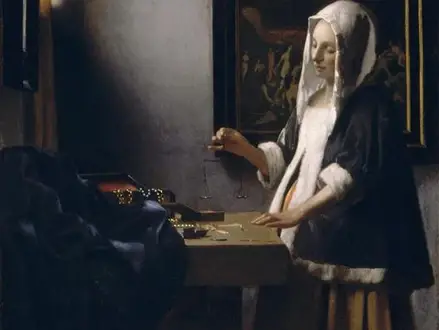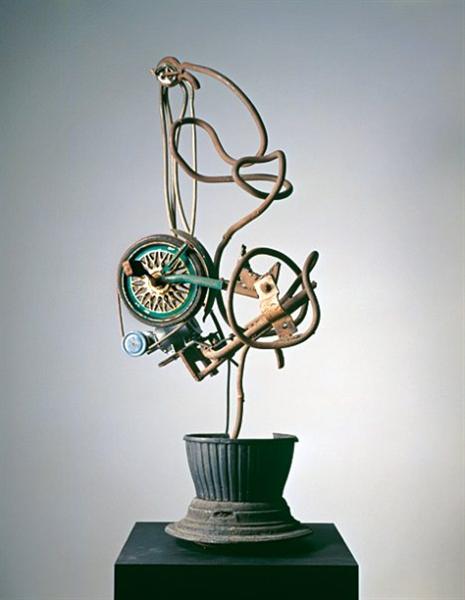Title of Artwork: “Woman Holding a Balance”

Artwork by Johannes Vermeer
Year Created 1665
Summary of Woman Holding a Balance
Johannes Vermeer’s oil painting Woman Testing a Balance, also known as Woman Holding a Balance, dates from the Dutch Golden Age.
The painting, completed between 1662 and 1663, was once known as Woman Weighing Gold, but a closer look has revealed that the balance in her hand is empty. With regards to the painting’s subject matter and symbolism, there are a variety of interpretations, with the woman being seen as either holy or earthly.
All About Woman Holding a Balance
Young woman holding an empty balance stands before an open jewellery box with pearls and gold spilling out of it in Vermeer’s painting. To the left, a window with a golden curtain provides light, while a blue cloth rests beneath a mirror in the left foreground. The Last Judgment, depicted in a painting behind the woman, shows Christ with his hands raised and outstretched. Catharina Vermeer, Vermeer’s wife, may have been the inspiration for this woman.
There are many different interpretations of the painting, including “interpreted as a vanitas painting, as a representation of divine truth or justice, as a religious meditative aid, and as an incitement to lead a balanced, thoughtful life.” says Robert Huerta in Vermeer and Plato: Painting the Ideal. Others have compared the woman’s actions to Christ’s, reading a parable into the pearls, while others have imagined her weighing her valuables. Others have compared her to Mary, citing art critic John Michael Montias’ description of the woman as “symbolically weighing [her] unborn souls. If her critics are to be believed, her comparison of Heaven’s treasures to earthly ones suggests that she should be measuring the value of Heaven’s treasures rather than the value of earthly ones. The mirror on the wall may serve to reinforce her sense of self-importance if viewed from this angle.
Before microscopic examination confirmed that the balance in her hands is empty, the painting, which was completed in 1662 or 1663, was known as Woman Weighing Gold. On May 16, 1696, the estate of Jacob Dissius (1653–1695) sold a large collection of Vermeer paintings, including this one. While it was more expensive than his Girl Asleep at a Table (62) and The Officer and the Laughing Girl (about 44 guilders at that time), it was less than The Milkmaid (177).
For the blue tablecloth, Hermann Kühn used ultramarine, and for the grey wall, lead white was used in the first pigment analysis. It has been determined that the yellow colour of the curtain is Indian yellow. Feller and Gifford’s subsequent technical examinations of the painting have revealed that the painting had been enlarged by approximately five centimetres on each side at a later time. Unfortunately, H. Kühn had to take a sample from this extension in 1968 for his research. Lead-tin-yellow is the correct pigment for the yellow curtain. Colourlex has the most up-to-date data on pigment analysis.
Information Citations
En.wikipedia.org, https://en.wikipedia.org/.























